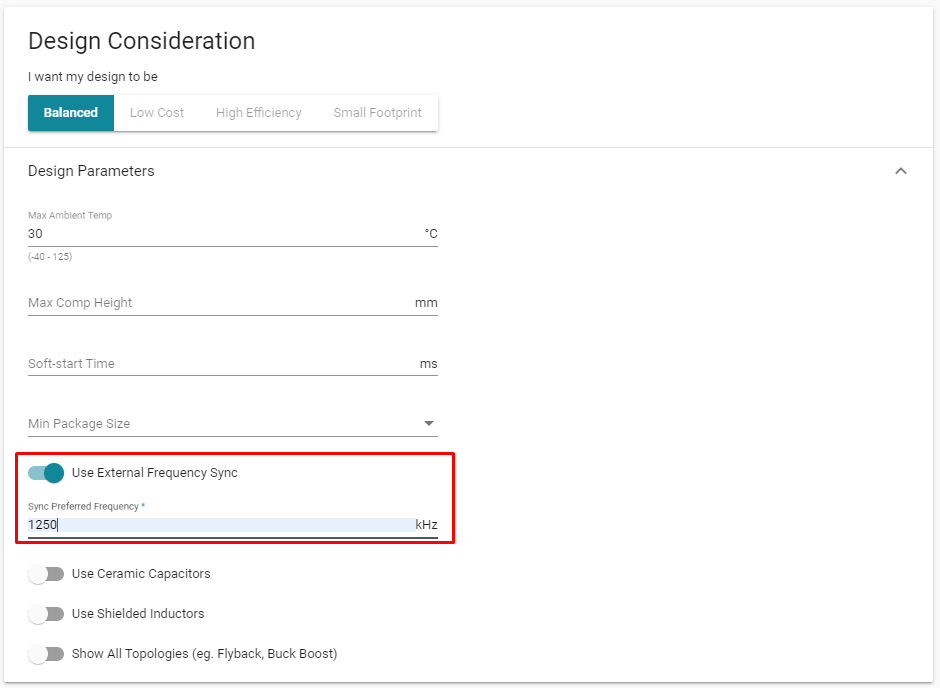Other Parts Discussed in Thread: TPS54A24, TPSM84824, TPSM84424
Hi,
I'm designing a project with requirements for different types of switchers.
I have an input voltage of 10V and I need to deliver the following voltages to me circuit (derived from the 10V):
- 8V --> 1.5A
- -5.25V --> 0.95A
- 5.25V --> 19A (can be divided up to 4 ICs)
- 3.5 --> 8.3A (can be divided up to 2 ICs)
- 2.2 --> 10.46A (can be divided up to 3 ICs)
- 6.25V --> 6.15A (can be divided up to 2 ICs)
- 5.7V --> 2A
- 4.3V --> 0.25A
The main problem I have is that I need to synchronize all these components to 3 possible options:
- Fixed 1.25MHz
- Fixed 2.5MHz
- Variable 200-300KHz --> meaning I will change the frequency every few microseconds between 200-300KHz with fixed step (could be lower bandwidth, but inside these limits).
Can you help me find converters which can cover the above requirements?
I looked at LMZ31710 but the sync can reach up to 1.2MHz, and I think I can't use option 3 for synchronization because it needs fixed frequency.
Thank you,


